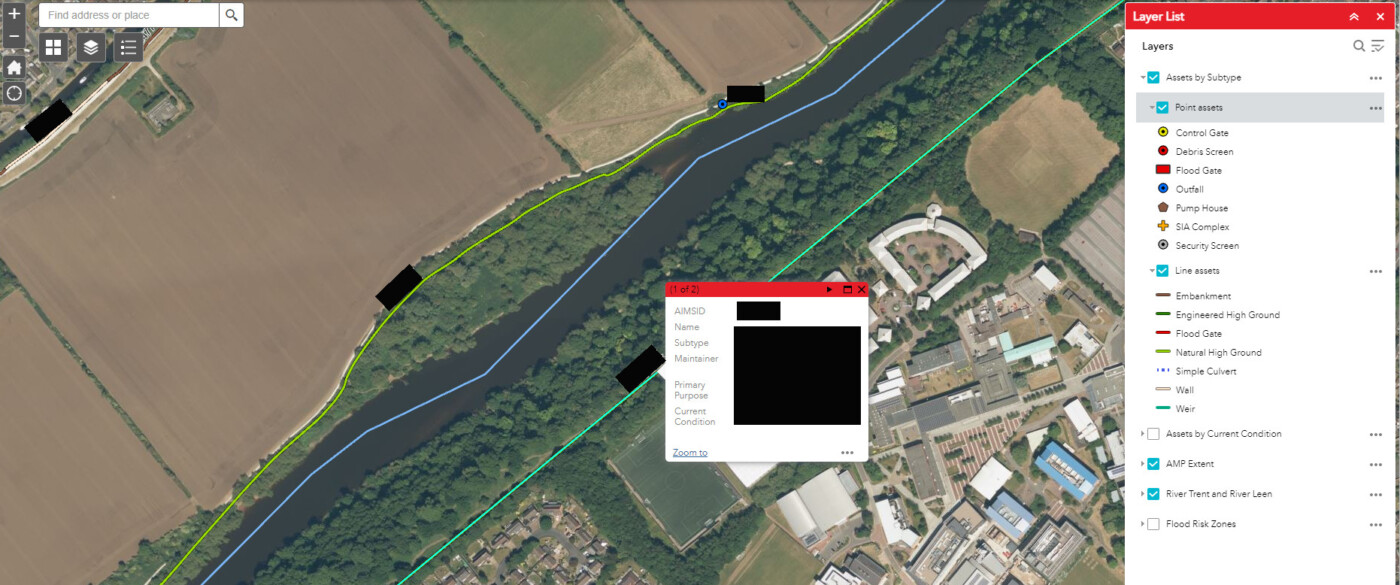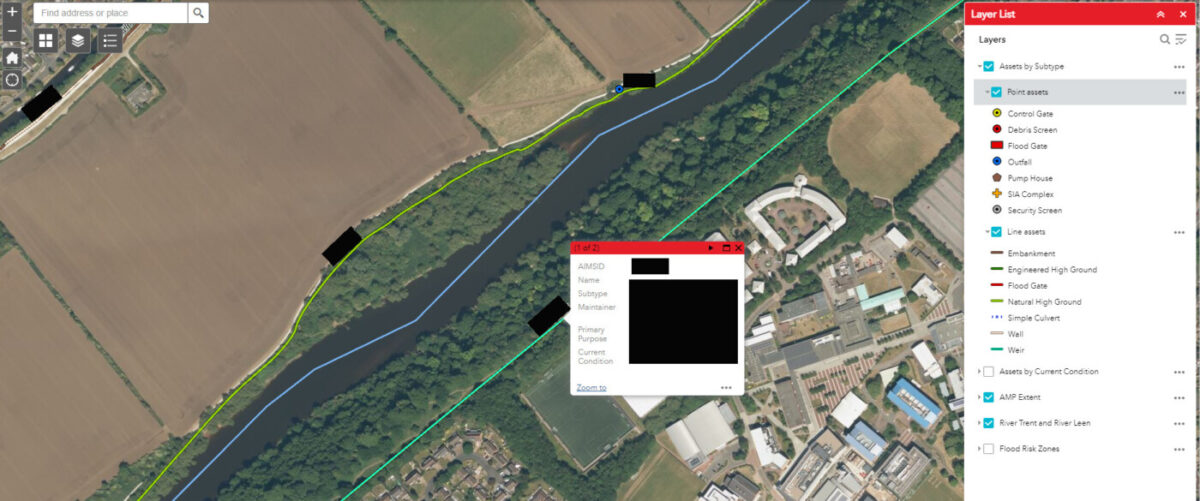Arup have built a digital investment planning tool to help the Environment Agency (EA) optimise the maintenance and management of over 600 critical flood defence assets along the River Trent. We have taken significant quantities of previously independent asset data, joined and analysed it in a sophisticated, highly automated fashion to create a robust model. Based on the unique and interconnected nature of each asset subtype, current condition, expected deterioration, and the varying requirements for maintenance and intervention, the model predicts the expected benefit and costs of any given investment plan.
Currently used to develop a 50-year optimised Asset Management Plan (AMP) for Greater Nottingham, we are also developing a method to prioritise proposed works to form a strategic programme of investment. Alongside this, we have built a web map and interactive PowerBI dashboard as supportive tools to help decision makers explore key asset information using a simple user-friendly interface. The project has marked a significant change in the EA’s method of asset management: transitioning from a reactive to a proactive approach. Our work is enabling long-term decision-making, helping protect against flood breeches long before they occur.
The high degree of automation which has been achieved throughout data cleansing, analysis, modelling and visualisation has undoubtedly saved the EA countless hours of manual asset-by-asset analysis. We used Feature Manipulation Engine (FME), a powerful piece of no-code ETL (Extract-Transform-Load) software, to carry out data analysis, and to build our sophisticated predictive model. With plans to conduct similar work elsewhere, the efficiency savings from reusing aspects of our analysis will be significant- helping to streamline flood prevention works for the 25,000 at-risk properties in Nottingham as well as for many more in other catchments.
Three Winning Facts:
- We have developed a crucial tool to optimise the maintenance and refurbishment of over 600 key flood assets in Greater Nottingham, helping to protect approximately 25,000 properties at significant flood risk in a changing climate.
- Highly automated sophisticated analysis, modelling and optimisation are saving countless hours of laborious asset-by-asset analysis and decision-making.
- The project is being used as a proof of concept for the Environment Agency, with plans to replicate the work for other catchments across the UK.


